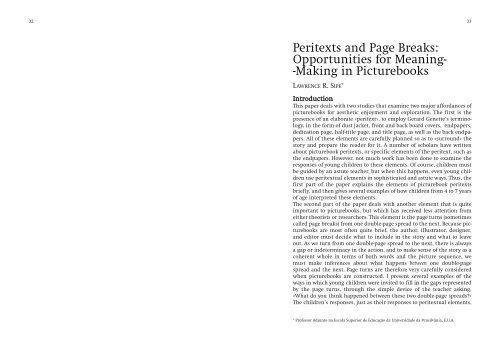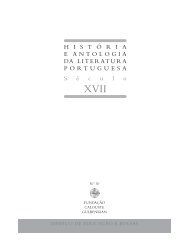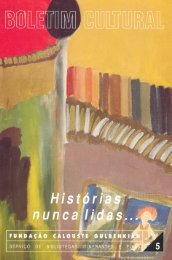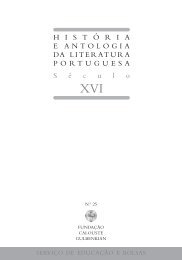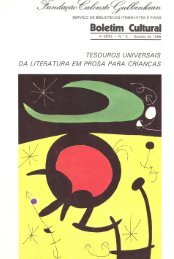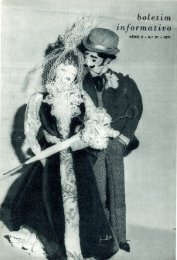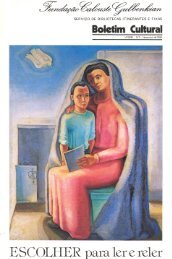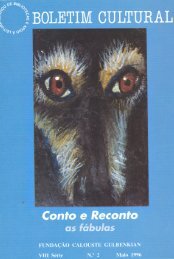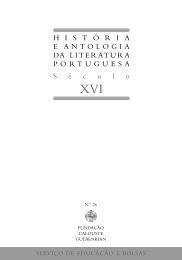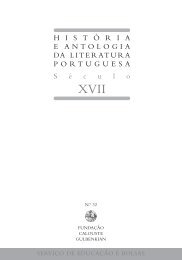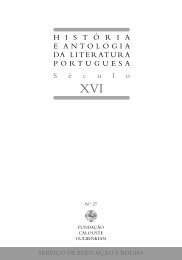Formar Leitores para Ler o Mundo - Leitura Gulbenkian - Fundação ...
Formar Leitores para Ler o Mundo - Leitura Gulbenkian - Fundação ...
Formar Leitores para Ler o Mundo - Leitura Gulbenkian - Fundação ...
Create successful ePaper yourself
Turn your PDF publications into a flip-book with our unique Google optimized e-Paper software.
32<br />
Peritexts and Page Breaks:<br />
Opportunities for Meaning-<br />
-Making in Picturebooks<br />
LAWRENCE R. SIPE*<br />
Introduction<br />
This paper deals with two studies that examine two major affordances of<br />
picturebooks for aesthetic enjoyment and exploration. The first is the<br />
presence of an elaborate «peritext», to employ Gerard Genette’s terminology,<br />
in the form of dust jacket, front and back board covers, endpapers,<br />
dedication page, half-title page, and title page, as well as the back endpapers.<br />
All of these elements are carefully planned so as to «surround» the<br />
story and prepare the reader for it. A number of scholars have written<br />
about picturebook peritexts, or specific elements of the peritext, such as<br />
the endpapers. However, not much work has been done to examine the<br />
responses of young children to these elements. Of course, children must<br />
be guided by an astute teacher, but when this happens, even young children<br />
use peritextual elements in sophisticated and astute ways. Thus, the<br />
first part of the paper explains the elements of picturebook peritexts<br />
briefly, and then gives several examples of how children from 4 to 7 years<br />
of age interpreted these elements.<br />
The second part of the paper deals with another element that is quite<br />
important to picturebooks, but which has received less attention from<br />
either theorists or researchers. This element is the page turns (sometimes<br />
called page breaks) from one double-page spread to the next. Because picturebooks<br />
are most often quite brief, the author, illustrator, designer,<br />
and editor must decide what to include in the story and what to leave<br />
out. As we turn from one double-page spread to the next, there is always<br />
a gap or indeterminacy in the action, and to make sense of the story as a<br />
coherent whole in terms of both words and the picture sequence, we<br />
must make inferences about what happens between one double-page<br />
spread and the next. Page turns are therefore very carefully considered<br />
when picturebooks are constructed. I present several examples of the<br />
ways in which young children were invited to fill in the gaps represented<br />
by the page turns, through the simple device of the teacher asking,<br />
«What do you think happened between these two double-page spreads?»<br />
The children’s responses, just as their responses to peritextual elements,<br />
* Professor Adjunto na Escola Superior de Educação da Universidade da Pensilvânia, E.U.A.<br />
33


